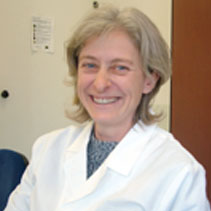Multifunctional Materials in Tissue Regeneration
A special issue of Materials (ISSN 1996-1944). This special issue belongs to the section "Biomaterials".
Deadline for manuscript submissions: closed (30 December 2019) | Viewed by 22903
Special Issue Editors
Interests: biomaterials; dental materials; tissue regeneration; tissue engineering; oral medicine; bacterial biofilm; anti-infective technologies
Special Issues, Collections and Topics in MDPI journals
Interests: oral implants; biomaterials; tissue regeneration
Special Issues, Collections and Topics in MDPI journals
Special Issue Information
Dear Colleagues,
Tissue regeneration is an attractive approach to restore and replace diseased or defective tissues for organs rehabilitation. It involves the use of proper scaffolds mimicking the extracellular matrix and able to support pivotal regenerative steps such cells signalling, recruitment, adhesion, proliferation and specific function. Accordingly, Scaffolds, signalling and cells are the magic Triad for regeneration.
In this scenario, Biomaterials take the challenge to reconstruct a suitable environment for cells function and, at the same time, to provide a mechanically robust three-dimensional structures protecting the healing process when clinically applied.
They should differently orchestrate the biological response in order i) to foster the growth of different types of tissues, and ii) to avoid infections during and after healing.
In addition, they should offer the possibility to monitoring the heling process and properly modify their properties in relation to the clinical needs.
The scope of this Special Issue, entitled “The Multifunctional Materials in Tissue Regeneration” is to provide the state-of-the-art of the research on the properties, the production, the characterization and the applications of biomaterials with contextual different properties addressed to optimize and monitor tissues regeneration.
This Special Issue aims at collecting experimental or theoretical review articles and leading-edge research papers dealing with biomaterials, stem cells biology, microbiology, in-vitro modeling for regenerative medicine applications
Prof. Dr. Lia Rimondini
Dr. Andrea Cochis
Guest Editors
Manuscript Submission Information
Manuscripts should be submitted online at www.mdpi.com by registering and logging in to this website. Once you are registered, click here to go to the submission form. Manuscripts can be submitted until the deadline. All submissions that pass pre-check are peer-reviewed. Accepted papers will be published continuously in the journal (as soon as accepted) and will be listed together on the special issue website. Research articles, review articles as well as short communications are invited. For planned papers, a title and short abstract (about 100 words) can be sent to the Editorial Office for announcement on this website.
Submitted manuscripts should not have been published previously, nor be under consideration for publication elsewhere (except conference proceedings papers). All manuscripts are thoroughly refereed through a single-blind peer-review process. A guide for authors and other relevant information for submission of manuscripts is available on the Instructions for Authors page. Materials is an international peer-reviewed open access semimonthly journal published by MDPI.
Please visit the Instructions for Authors page before submitting a manuscript. The Article Processing Charge (APC) for publication in this open access journal is 2600 CHF (Swiss Francs). Submitted papers should be well formatted and use good English. Authors may use MDPI's English editing service prior to publication or during author revisions.
Keywords
- Multifunctional materials
- biomaterials
- scaffolds
- implants
- regenerative medicine
- anti-infective materials
- stem cells
- organoids
- organ-on-chip







